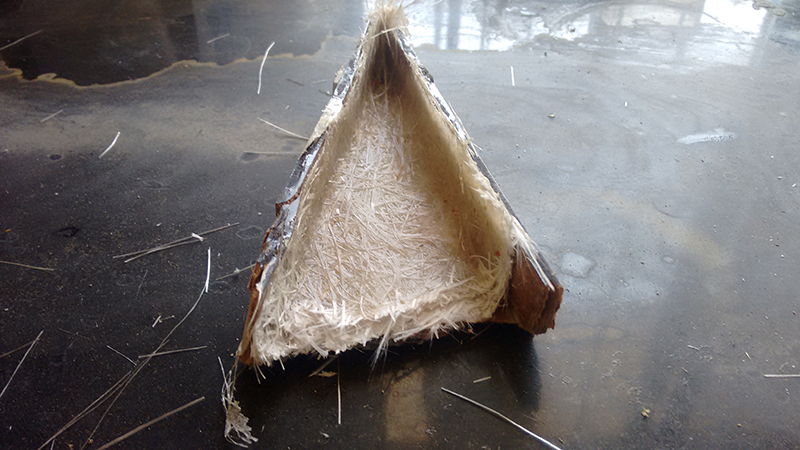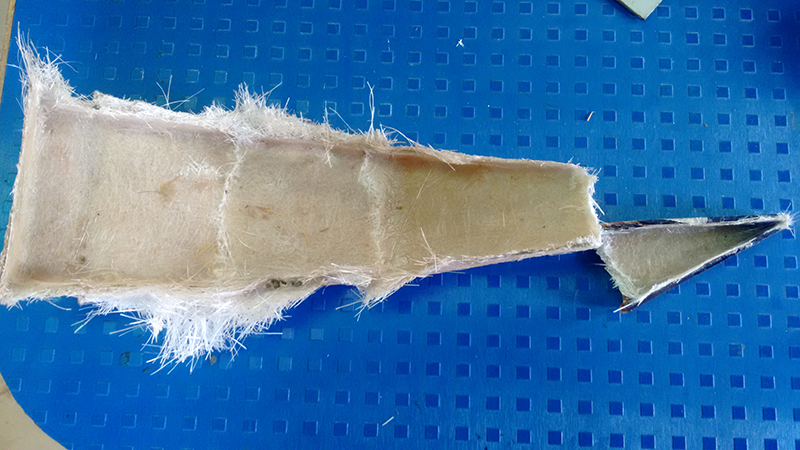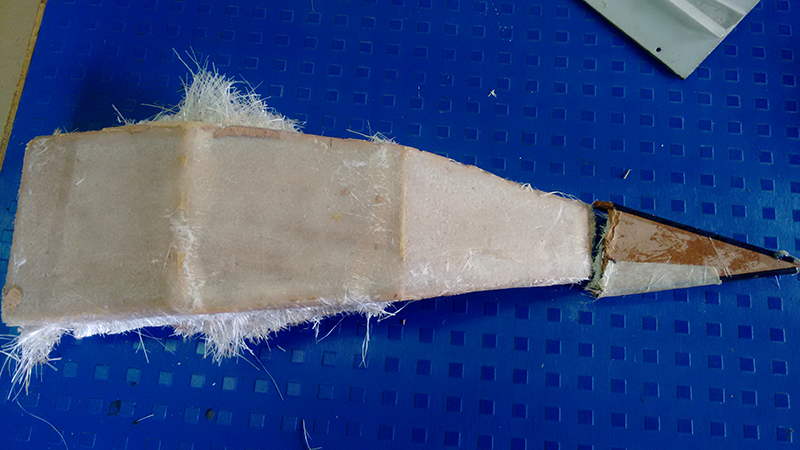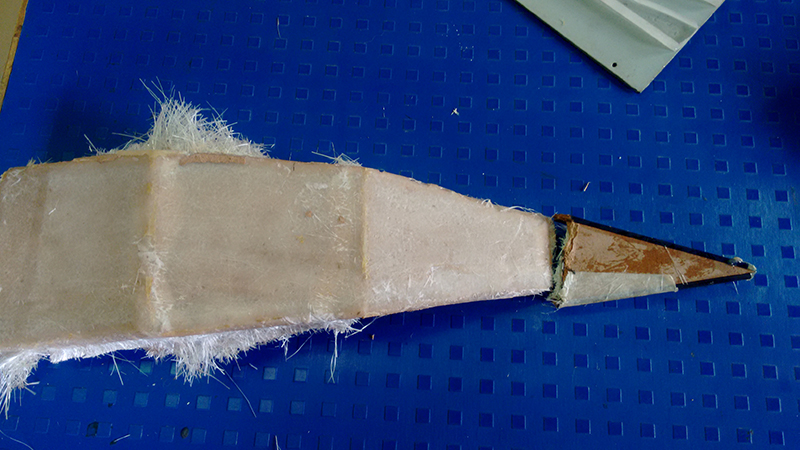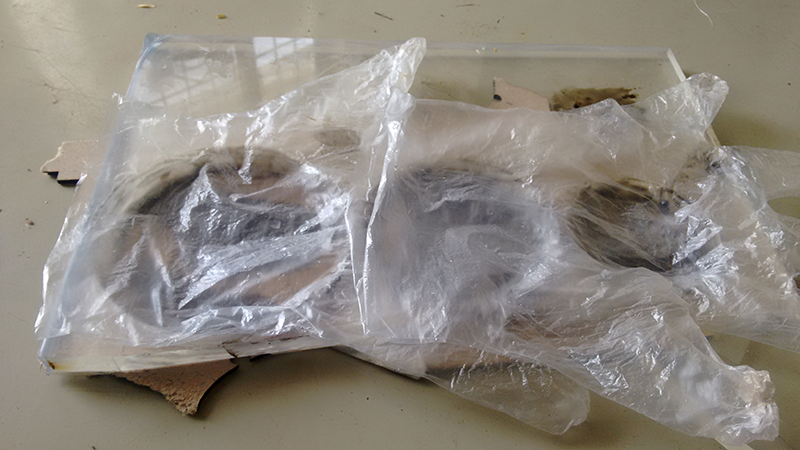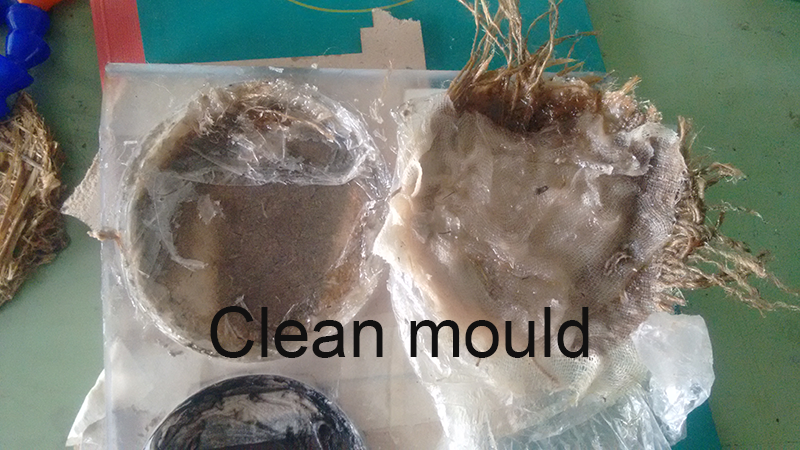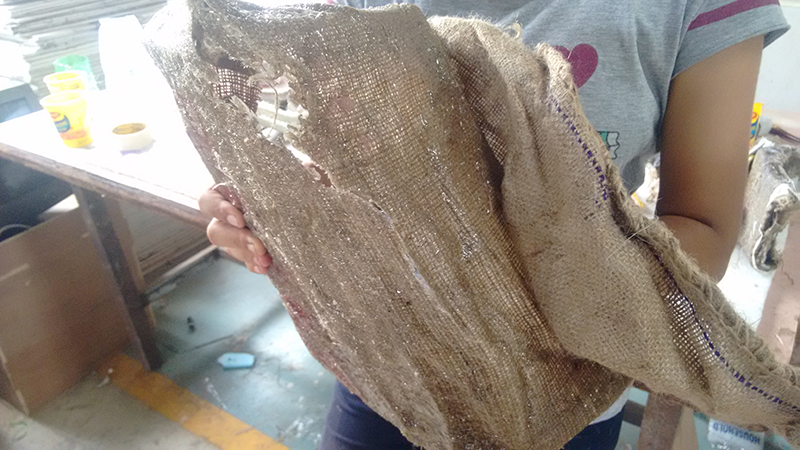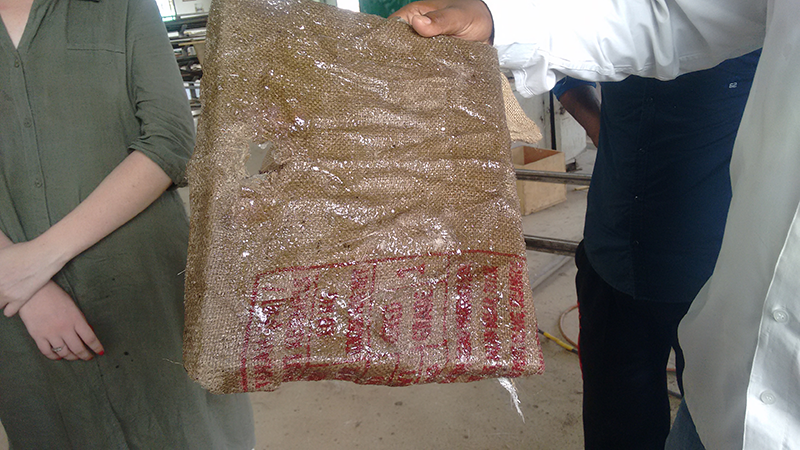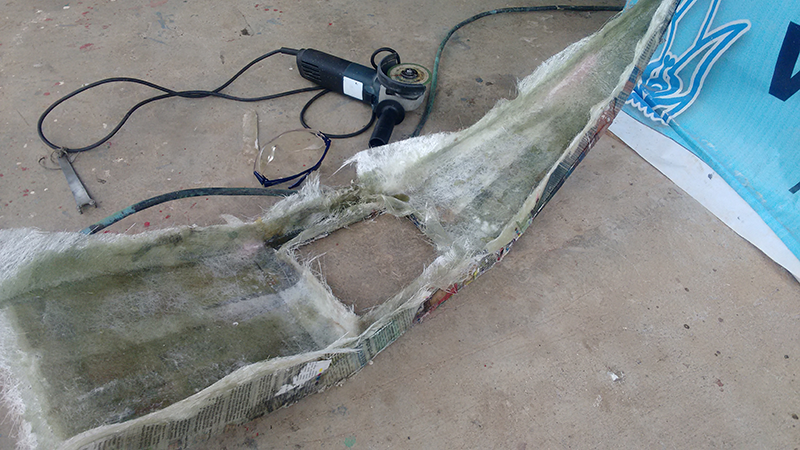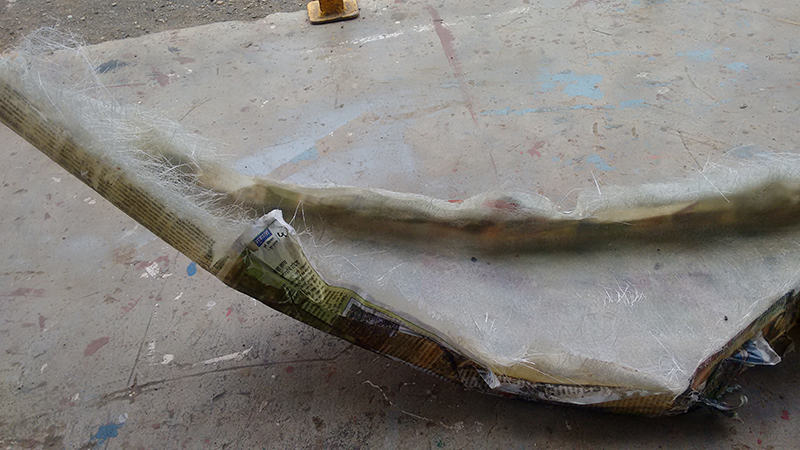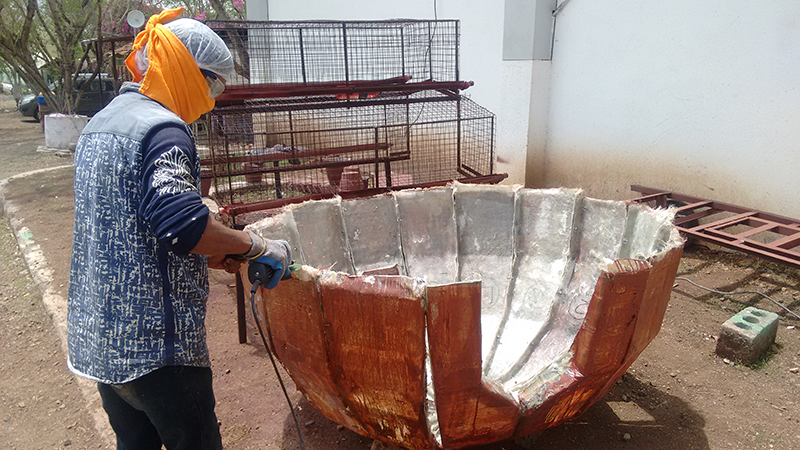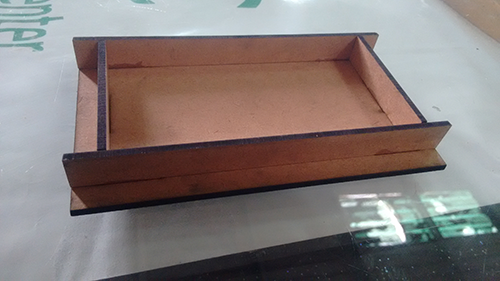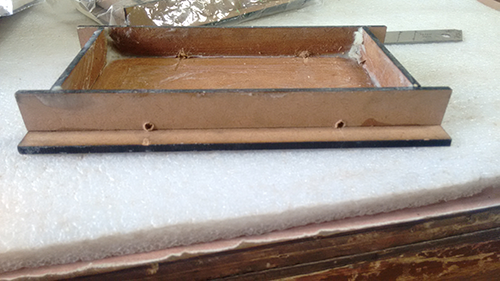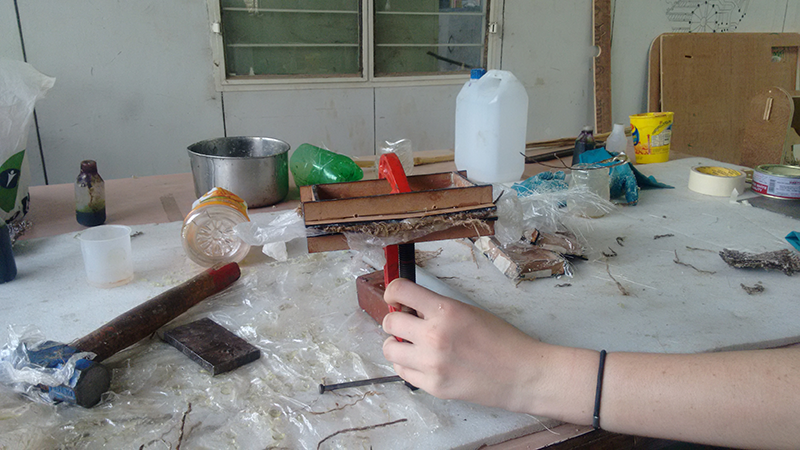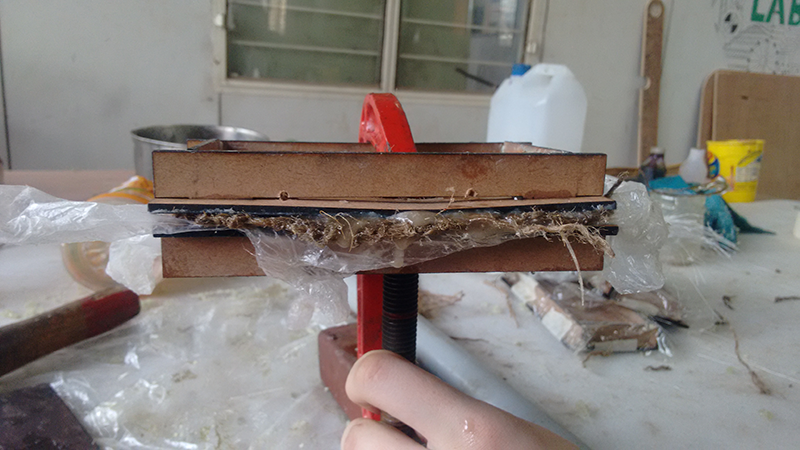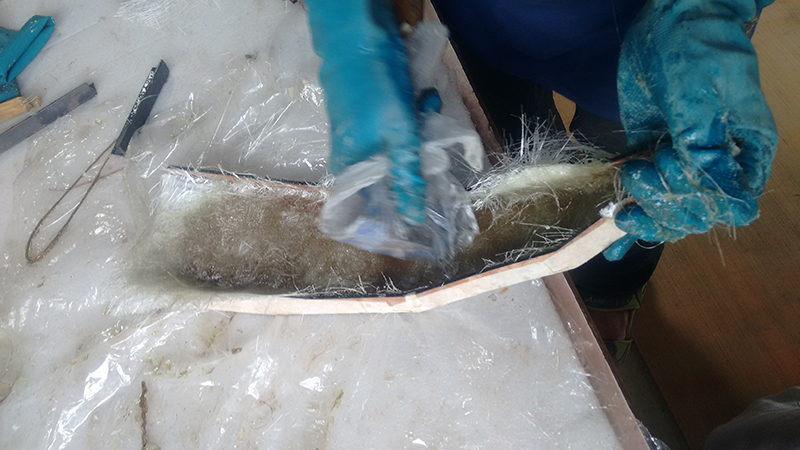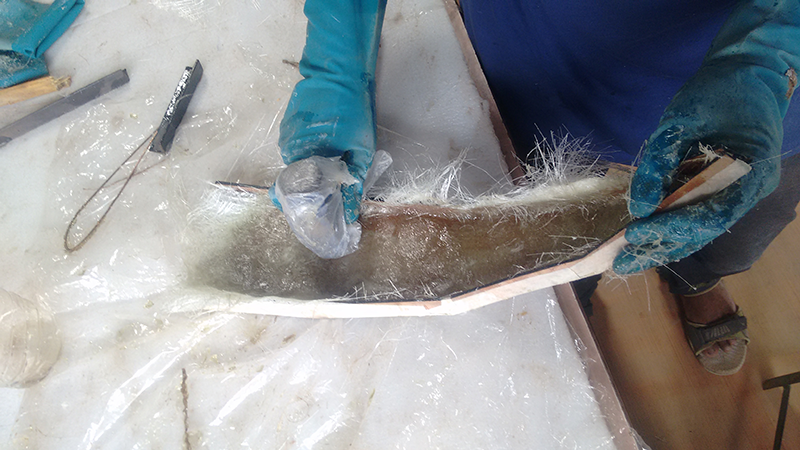Composites
This week it all got messy, sticky hands, dirty floor, clothes with stains and stubburn conntainers that refuse to let go the hardened resin, this is an important week for me as this constitute the major part of my project. I will be deciding the resin mix to build my dome structure, I will be trying on a lot of natural fibres with resins, also I will try out a scaled down of my final project this week.
I had designed the scaled down mold for my project and tried a few composites using cement as a matrix material.
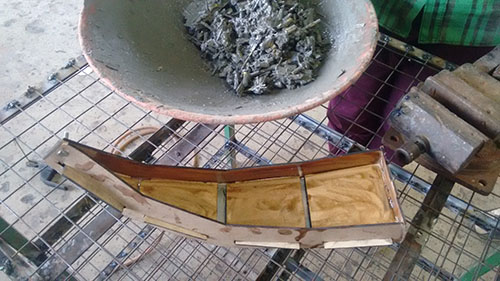
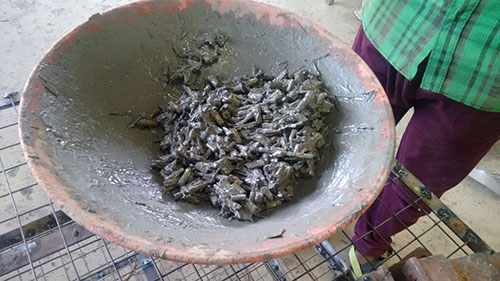
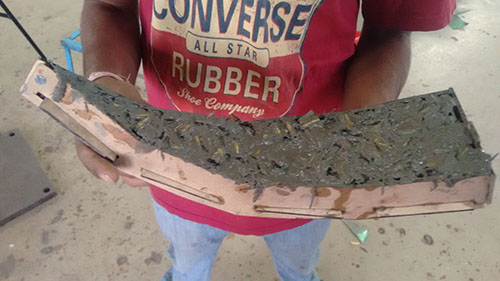
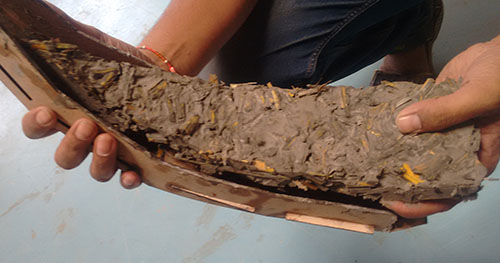 Cement composite tried few weeks before
Cement composite tried few weeks before
But the results were not atall satisfactory, my project requires the material to light weight and should be made of natural resin. The cement composite was heavy, thick and did not gel well with the natural fibers
Thus I had to move to something other than cement really quickly, although magnesium cement is an option(it gels well with natural fibers) but it still is a heavy thick section.
I decided to go with resins as the matrix structure and natural fibers available at vigyan ashram as tension members.
I tried Bamboo, burlap, coir(cooconut hsuk), cotton with polyester resin. I made a few coupons to try the composites and how well oit goes well with the resin.
The first composite I tried was using unstaurated polyester resin and glass fibre as reinforcement. I went through this paper before starting the work, this paper concludes the gel time to 10 minutes and reaction peak exothermic temperature at 170 degree which fine for my project considering we take all the precautionary measures.
Find the Material Data Sheet here
First thing I did was to go throught the safety data sheet and act accordingly, I was releived to know that the resin has no carcinogenic effects, it is flamable and may cause skin irritation but all these hazards have precautionary measures.
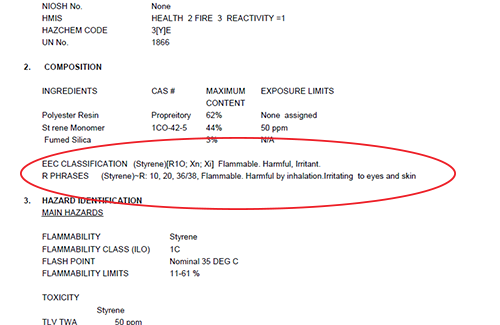

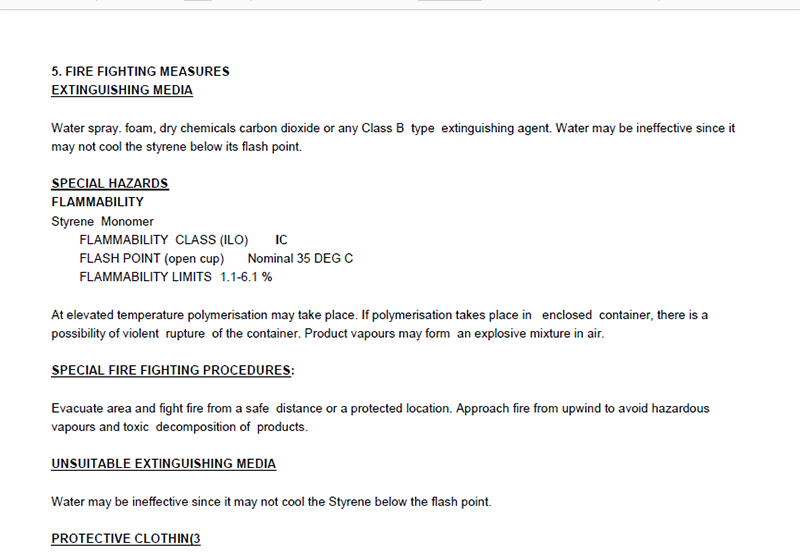
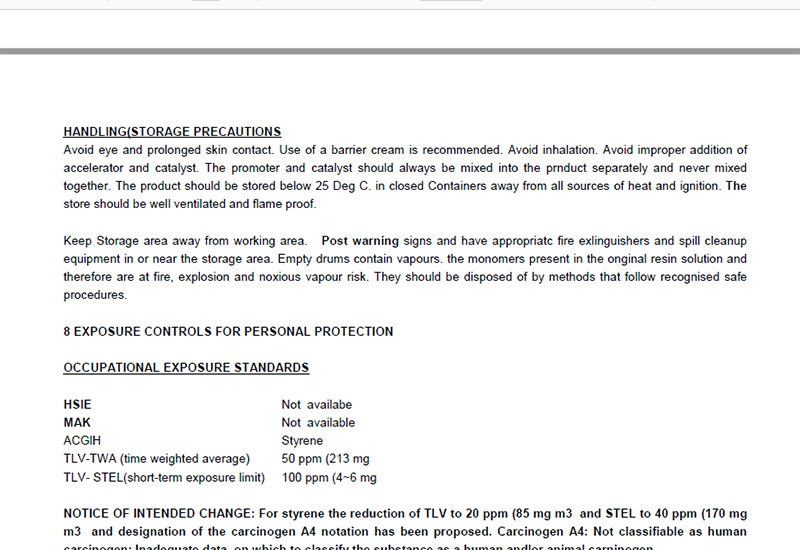
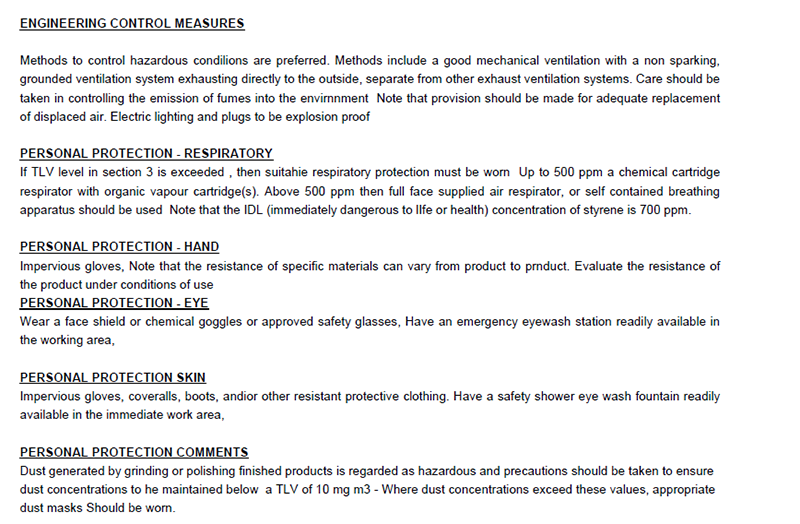
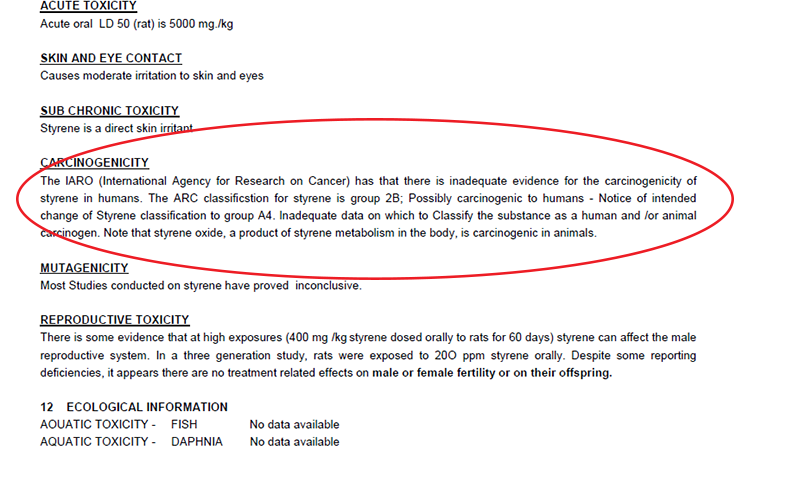 important issues discussed in material safety data sheet
important issues discussed in material safety data sheet
The data sheet says that the resin is flamable and harmful, it causes irritation to the eye and skin
If the resin is ingested by mistake we have to take care not to make the victim vomit, instead make the victim drink water and rinse its mouth.
Any kind of class B type of fire extinguishing agent can be used to put off the fire caused by the resin such as water spray, foam, dry carbon dioxide.
One important point mentioned in the material safety data sheet was that the catalyst and the accelerator should not be added together nor should we use the same conatainer to store or pour the two liquids. This is a flamable mixture.
Personal protecting equipment such as gloves, goggles and skin protection are necessary.
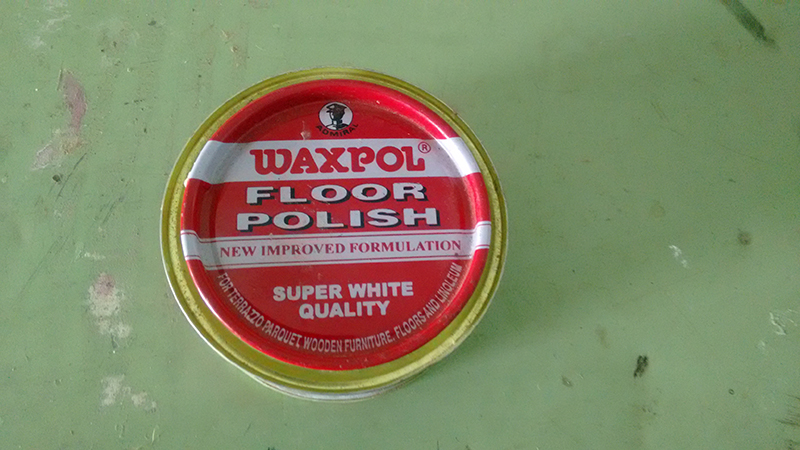
I waxed the mold using this wax,I bought it locally, this wax is used to polish the floorings to give a shinny look, I was a little skeptical about it working but I still gave it a try.
The method I followed was the hands lay up method , you can more about the method here
This method basically has applying resin and keeping the fibre reinforcement sheets in an alternate manner. For the first composite I made 6 layers of resin and 5 layers of fibre glass.
I made a mold in MDF, this is simple pressfit mould made in laser cutter, this is actually a scaled down mould of the dome I am designing for my final project
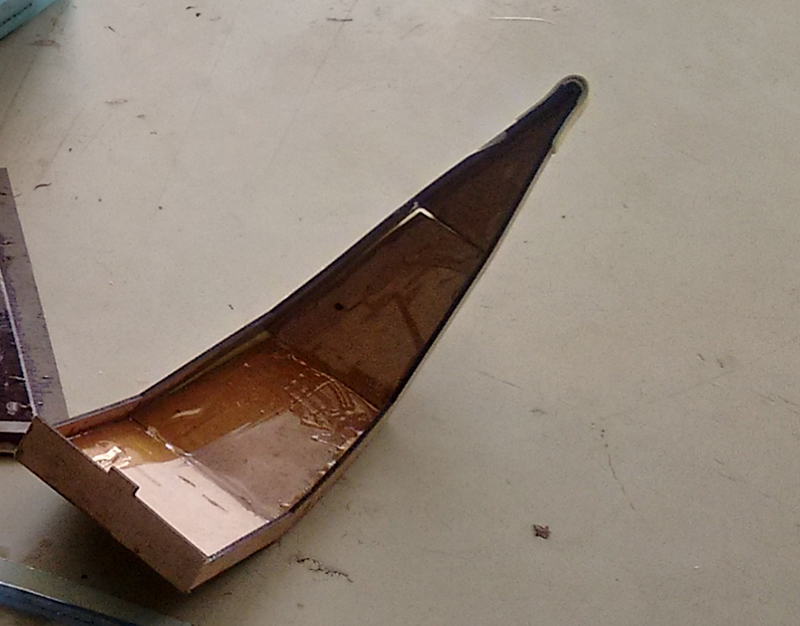
The resin uses methyl ethyl ketone peroxide(MKEP) as an intiator and cobalt octate as an accelerator. One can add calcium carbonate or ordinary talc as a filler material.
As Neil had suggested, to test the mould by pouring water in it to get an idea of the amount of resin required. This serves two purpose, it shows us the leaks if there are any and the other thing it does is it prevents us from pouring excess resin which if left unattended will become hard and spoil our container.
I took 500gm of resin in a plastic container and added 2% of cobalt octate in it and mix it thoroughly. By this time I am having my fiber glass ready by my side, just before I am ready to use the resin mix I add MKEP 2% in it and mix it thoroughly, this will start the hardening process. I make first layer of resin in the MDF mould and place a layer of glass fiber on it, I do this for 5 times till I get a nice homogenous mix of fiber glass and resin.
I observed that the temperature of the mix is starting to increase and once it cools down it is ready to be demoulded.
Demoulding proved to be really difficult, the resin and the mould got stick to each other and now they refuxe to seperate, I had to break the mould in order to get the resin composite out.fiber4/>n
I was really happy with the way resin performed, it hardened in a matter of 3 hours it was strong and had covered the glass fibre from all the sides. Now it was time to experement with other fibers using the same resin
I will redo the whole moulding process and usr this mould as a mould to cast my final composite for the dome. This mould has a little flexibilty this will greatly help me in getting the moulded panels out of the mould.
I did a trick for this, I used the already cut acryllic sheet to make the coupons.I screwed an MDF sheet to the cut acryllic sheet and made mold for the coupons. This way I saved a lot of designing and laser cutting work.
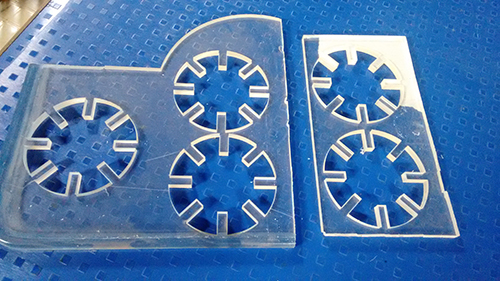
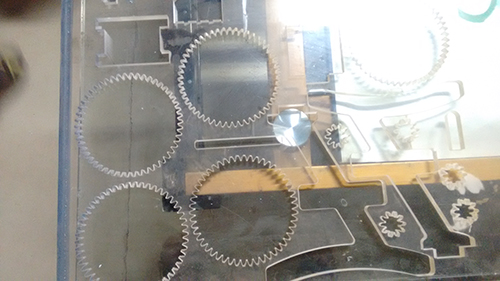 moulds for the coupons
moulds for the coupons
I tried the same technique as before and used burlap, cotton and bamboo as fiber.
I had a really bad experience with the wax that I was using, it did not work, it failed to seperate the mould and the resin, thus I I used engine oil as a releasing agent, this is burnt engine oil I applied it to the moulds and as a chance for the wax I tried one more mould with the it.
Also I did one trial with using food wrapping plastic on the mould, this plastic acts as barrier between the mould and the resin.
I did 5 plies with all of the fibers
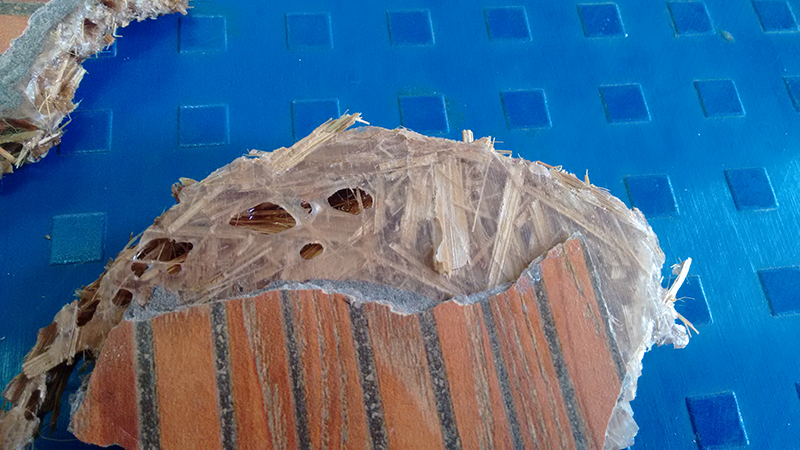
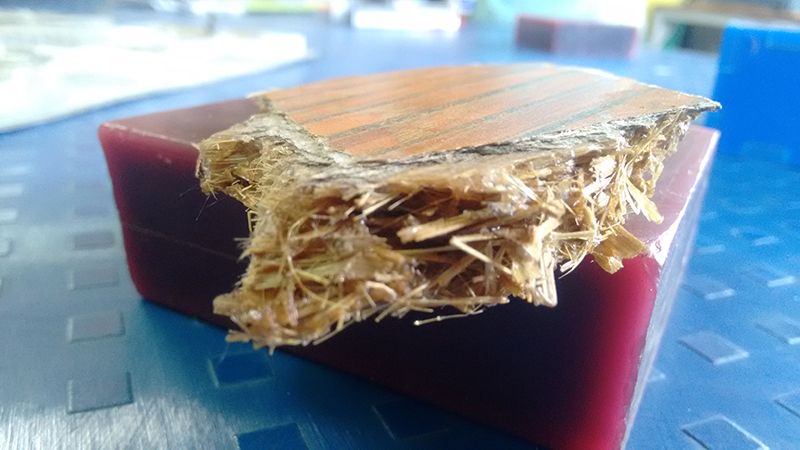 Bamboo and resin composite
Bamboo and resin composite
In this trail I used bamboo shavings and resin as composites, thus there was no sheet of bamboo to make plies, but it had 6 lyers of resin.
In the picture it can be observed that the mould was not demoulded nicely as the wax did not perform well, also the resin did not wet the bamboo fiber nicely in some areas whereas some areas it did.
I was not happy with the orientation of the strands of the bamboo, they were oriented haphazardly, this is not good for a loading structure as the structure wold fail if its fibers are oriented in random manner. This is not recommended for my project also as I will be expecting a lot of load coming on to the structure and I want the fibers to distribute it evenly, the present structure will fail in this case. Next time I will use interlocked mat of bamboo as fiber
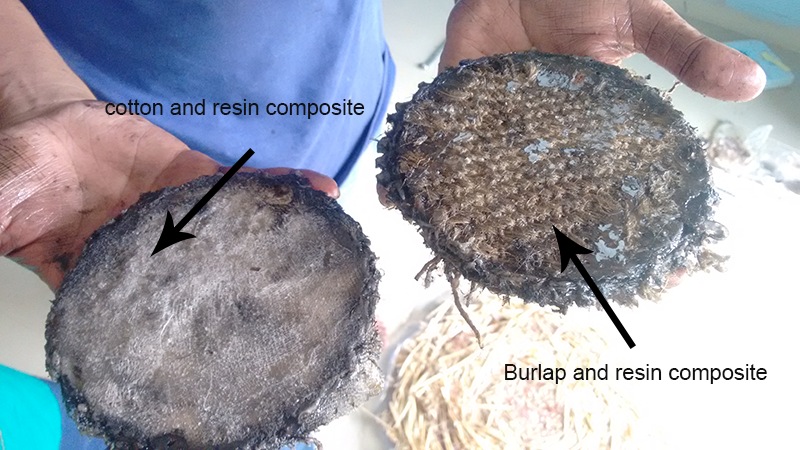
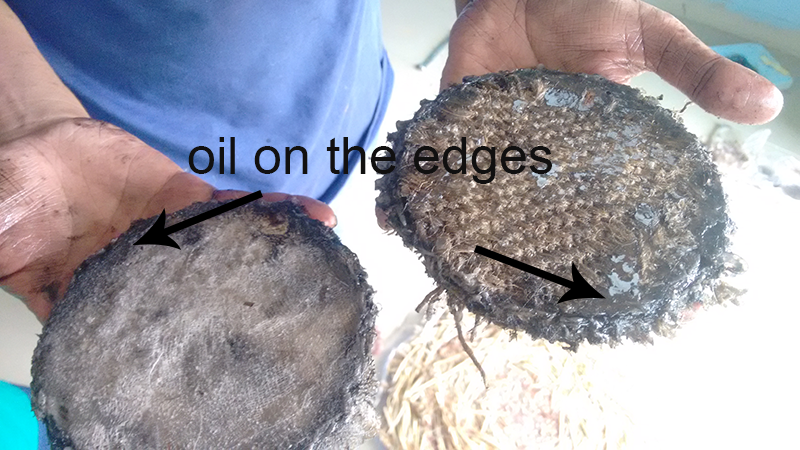 cotton and burlap composites
cotton and burlap composites
The burlap composite performed really well, it was strong it had considerable tensile and impact strenght.
The cotton composite was a little weak and flexible, you could almost bend it with some force, the cotton that I used was very finely intertwinned, it does not give strenght but it might do a great job to give a surface finish to the burlap composite as burlap composite does not have good surface finish.
One regret I have is that the oil is al over the resin mix, this makes it look dirty, I really need to find another releasing agent.
For this trial I used the left over burlap but I did a trick suggested by Neil, I used food pacakging plastic to layer a few layers before I pour the resin, The plastic adheres really well to mouldand on demoulding it sticks to the composite which gives it a smooth finish.Great advantage of foing this is that the mould demoulds really easily.
Before I select the burlap and resin as the composite mix from my final project I wanted to be really sure it will perform good for a larger structure thus I decided to cast a bigger panel from it, this time I used steel tray as my mould, I polishedd it and sealed the corners just so that the resin might not seep out.
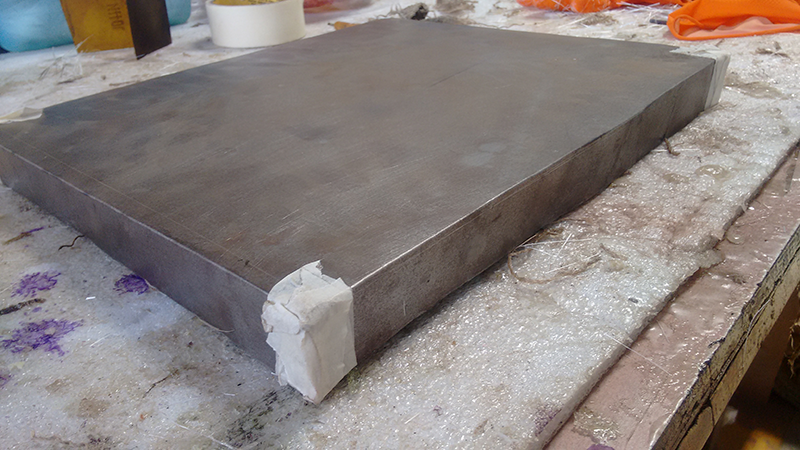
The results were devastating, the resin and the fiber mix did not perform well in a larger strucure, I used 3 piles of burlap and the mix became very brittle, there was no tensile or impact strenght at all
I was convinced that the burlap mixture has a good strenght for a smaller structure but when it comes to making a larger structure it fails, This can not be the composite for my final project
I will have to go back to glass fiber and polyester resin mix as a composite
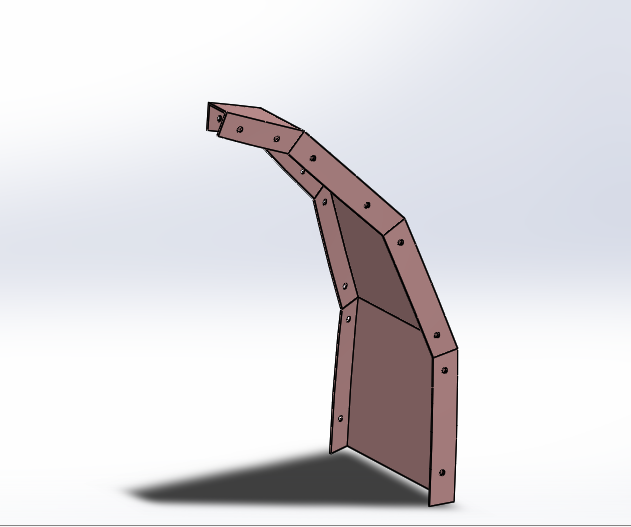
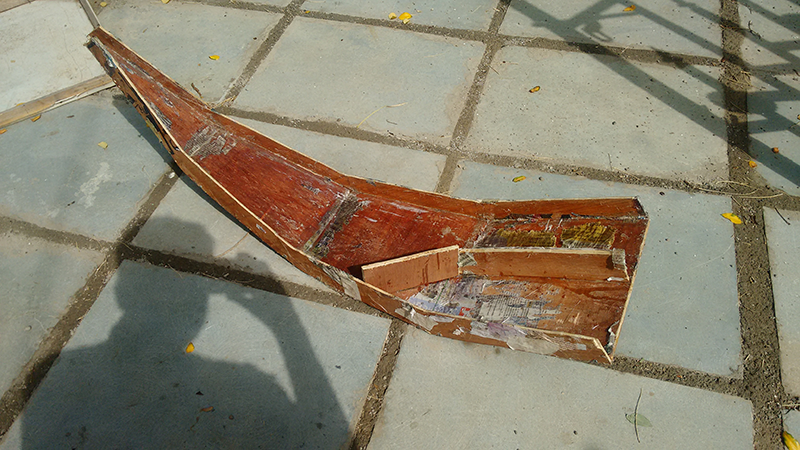
I waxed it and used newspaper to cover the whole structure, this will act as a layer between the resin mix and the actual mould,I anticipate the paper will stick to the job when demoulded, I will have to take it out or grind it
I selected newspaper as it bends nicely at tight corners unlike plastic which tends to form a bubble at the corners.
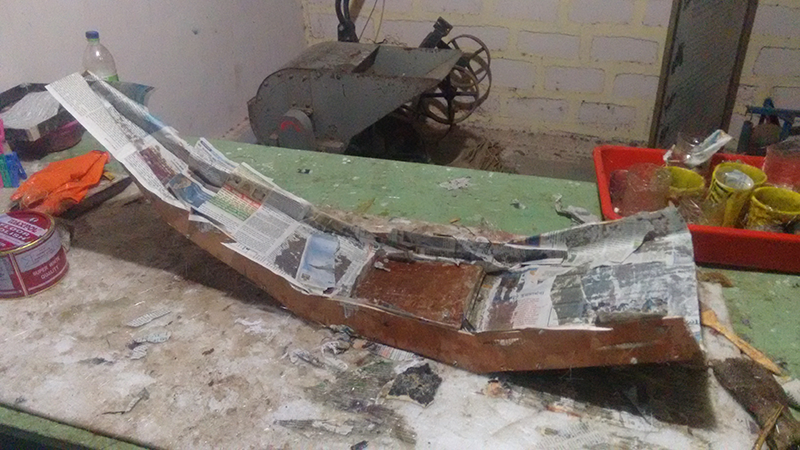
As I expected the demoulding was really easy, no sticking or cracking was observed, the job had a layer of paper on it as expected, I was happy with the overall finish of the job
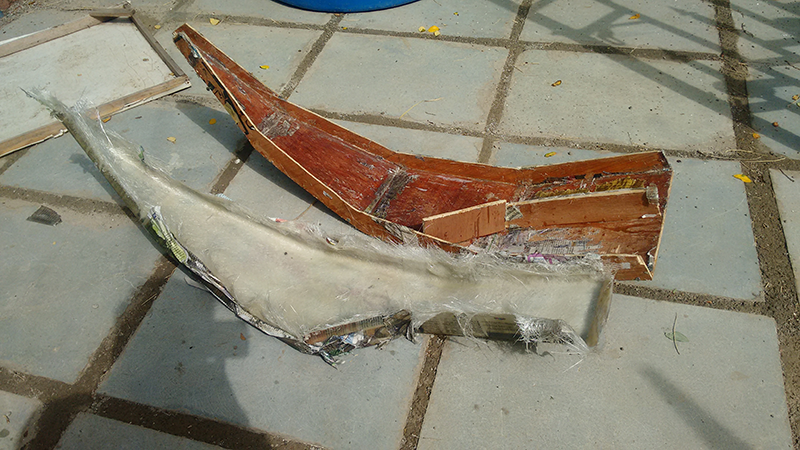
But the job need a good trimming at the ends I used a electric grinder for this, my friend volunteered to do this, We made sure that the whole body is covered especially mouth and nose, goggles and nose mask was used along with the handgloves
The dimensions of the job are well maintained and the dome is coming out really well
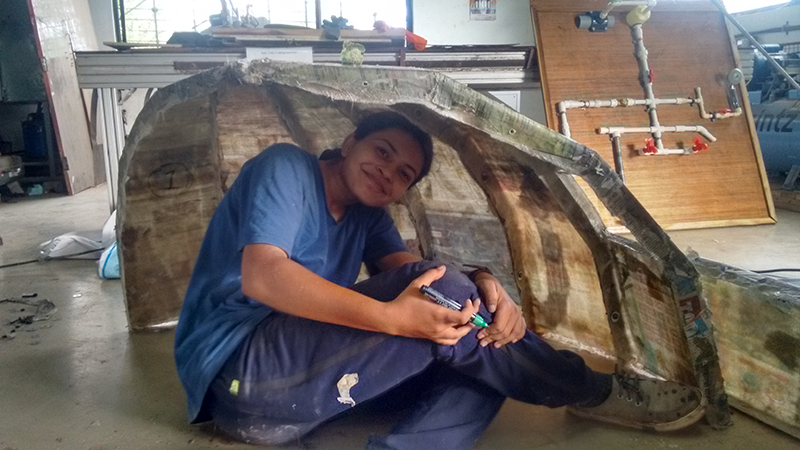 Daydreaming under the dome
Daydreaming under the dome
I wanted to try a few compaction techniques and what difference does it make on the resin mix for this I designed a few test coupons and laser cut it
I experimented with squeegie and clamps, for squeegie I am using a flat head hammer with a plastic wrap around it so that the resin doesn't stick to it, for the other method I am using clamps and keeing it in this position until the temperature of the mould drops to the room temperature.
The results were amazing, clamping removes the extra resin from the mix, this helps the composite from becoming brittle,
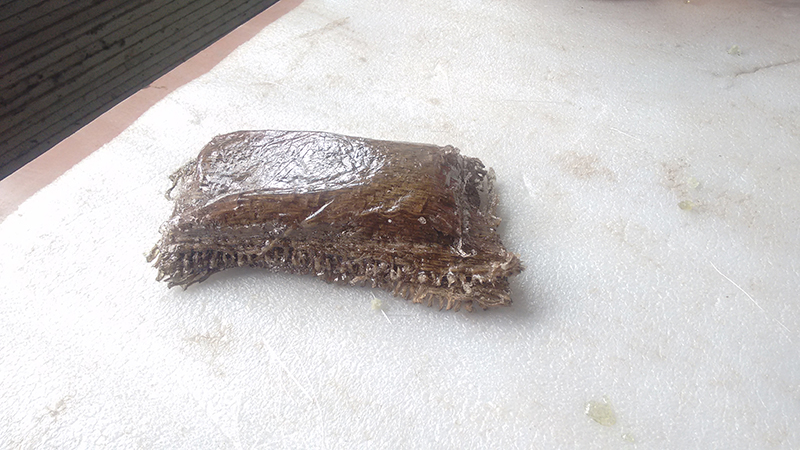
 Difference made by compaction
Difference made by compaction
My experience
This is a really important week for me, I have tried a few natural fibers by now such as burlap, bamboo shavings, cotton fiber, I still have to try a lot. I am likking the way burlap is performing, it is really strong. Although it is not fire resistant, this is not good as building material, I might have to treat or paint it externally to make it fire resistant, but it really fails as building material, it is brittle and fragiel
I believe Bamboo will perform better once I get hold of the bamboo mats, the bamboo shavings are not that great, also I have read somewhere that the bamboo fibers need treatment before the use, I need to try that.
Cotton is too weak I will never use it unless it is used to give a good finish to the burlap composite.
Fiber glass is great but it is really dangerous to machine it
I am happy with the unsaturated polyester resin, I want to continue using it as my matrix.
I still want to get a good release agent.
Also for my final project I have to try a lot such as hydrostatic compression, vaccum compression, breathers and bleeders etc. I still have to improve the mould design have to make it easy to demould.












